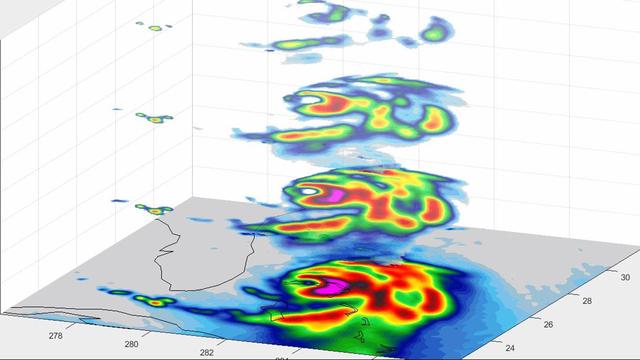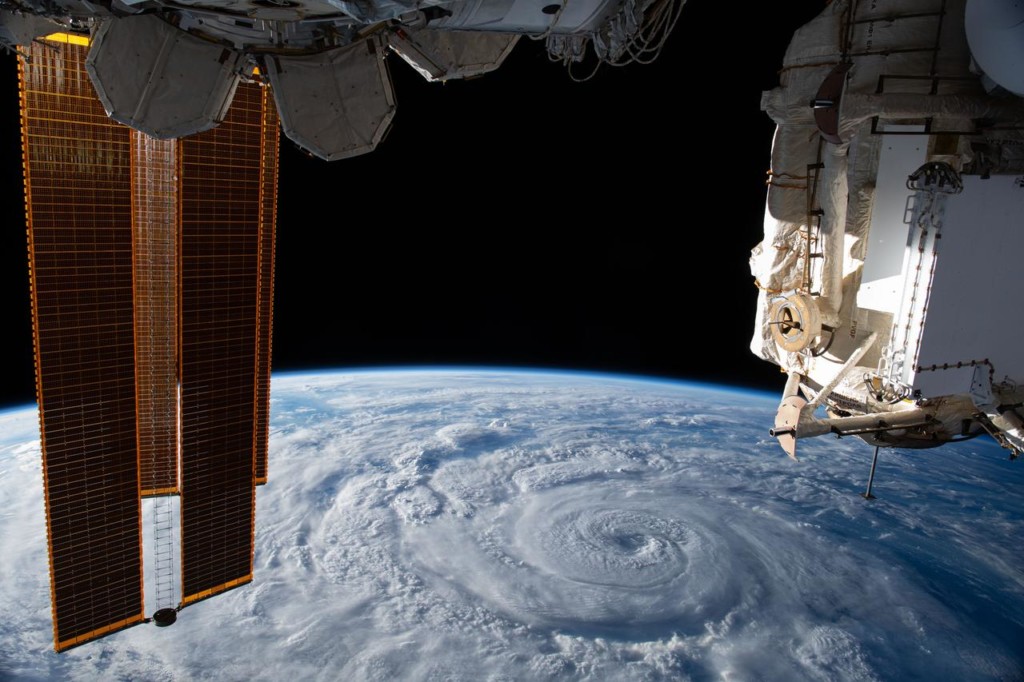
Hurricanes can cause high winds strong enough to tear up trees. Photo credit: Image from pxhere.com.
Hurricanes are powerful forces of nature. A hurricane, also known as a tropical cyclone, is a storm that occurs in tropical places near the equator that has high winds and heavy rainfall. Depending on which ocean you’re near, hurricanes can also be called typhoons or just cyclones. They are the most violent storms on earth, with intense winds, flooding, and other hazards that can cause damage to whatever is in their path.
Why are hurricanes so powerful, and why do they happen? What’s in a hurricane, and why do they have names and categories? In this blog post, we’ll get to the center of this storm and learn about this unique weather system.
How do hurricanes happen?
Hurricanes form near the equator. They use warm water to gather energy and suck in the moist air above the surface of the ocean, which forms clouds that rotate with the spin of the Earth through a process called “closed circulation.” This means that hurricanes rotate differently depending on the hemisphere they’re in. In the Northern hemisphere, they rotate counterclockwise, while in the Southern, they rotate clockwise. This phenomenon is called the Coriolis Force.

Satellite image of Hurricane Dorian. Image from NASA, https://images.nasa.gov/details-PIA00431

Hurricane Ivan captured by NASA Spaceborn Atmospheric Infrared Sounder (AIRS). Image from NASA, https://images.nasa.gov/details-PIA00431
The anatomy of a hurricane

The average hurricane is 300 miles wide. Image from NASA, https://unsplash.com/photos/i9w4Uy1pU-s
There are three main parts to a hurricane, and they all have distinct weather patterns:
The eye: Have you ever heard the phrase, “the eye of the hurricane?” Whoever said it may have been talking about having a moment of calm in the middle of chaos. That’s exactly what the eye is—a spot in the center of the hurricane where the winds aren’t very strong and there are no clouds. On average, the eye can be 20 to 40 miles across, but they can be much larger or smaller than that! The eye of the hurricane may look perfectly safe, but it’s important to remember that the rest of the storm is churning right outside.
The eye wall: This is the chaos beyond the eye, the spot where the hurricane is most intense. The eye wall is a ring of thunderstorms that line the outside of the eye. These storms produce the strongest winds and heaviest rainfall in the hurricane.
The rain bands: These are the swirling clouds that you can see spiraling out of the center of the hurricane. They can radiate out for hundreds of miles and cause rain and thunderstorms far away from the actual hurricane.
Hurricanes have categories, and names too!
In order to know how strong and potentially dangerous a hurricane is going to be, hurricanes are assigned categories based on the Saffir- Simpson Hurricane Wind Scale. This scale lets people know how much damage a hurricane may cause so they can prepare if they are in the storm’s path. There are five categories, based on wind speed:
- Category 1 Hurricane: Winds 74-95 mph
- Category 2 Hurricane: Winds 96-110 mph
- Category 3 Hurricane: Winds 111-129 mph
- Category 4 Hurricane: Winds 130-156 mph
- Category 5 Hurricane: Winds more than 157 mph
Sometimes, the winds aren’t strong enough for the storm to be considered a hurricane, and it is classified as a tropical depression or tropical storm instead:
- Tropical depressions: Winds less than 39 mph
- Tropical storms: Winds 39-73 mph
Hurricanes are also given names by the World Meteorological Organization. This is because sometimes multiple hurricanes or tropical storms can happen around the same time. Naming hurricanes prevents confusion and helps the news relay warning messages, so that people that may be in the path of the Hurricane know what precautions to take. The names are pulled from one of six alphabetical lists organized by the National Hurricane Center. One list is used per year, so the names are reused every six years.

Hurricane Genevieve pictured from the International Space Station. Image from NASA, https://images.nasa.gov/details-iss063e074380
Hurricanes are certainly forces to be reckoned with. They are a great example of nature’s awesome power, as well as the hazards of violent weather. Hopefully next time you hear about a hurricane hitting the coast, you can name the parts that you see and know how strong the winds are based on the category.
Sources/Learn More:
- Nasa
- National Hurricane Center
- National Oceanic and Atmospheric Administration
- National Geographic Kids
- Earth Networks
- Live Science
- World Meteorological Organization
- Weather.gov
About the Author: Sophia Holt-Wilson is a senior at Indiana University in the Media School with a specialization in advertising management. She is the Public Relations Intern at WonderLab for the 2020-2021 academic year.


Leave A Comment